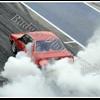Custom Afm
Announcements
-
Similar Content
-
Latest Posts
-
Don't they cool down technically when you're sitting at a set of lights?
-
The circuit if not a resistor divider is using an opamp to deliver a specific current normally. By maintaining the current as resistance changes, the voltage does too. Add to that, thermistors are normally non linear too,which can make creating a function impossible. Most uses of a thermistor people will utilise a lookup table to get the corresponding temperature.
-
On a scale of 1 to 10, how shit are the RE003's? (10 being ultra mega shit) Was hoping they'd be alright for a non-daily driven R32 that might get driven to Charnwood Macca's in the dry once a month, and maybe the odd hoon up and down the hills that pass for mountains in sunny Canberra. Bob Jane currently running a "Buy 4 Get 1 Free" deal on RE003s and my brain can't comprehend anything else being value for money
-
Yeah, they look good. I should try to fit them on mine. But being a GTSt, the guard shape probably doesn't suit properly.
-
Nah, it's not a simple voltage divider. I'm not enough of an electronics guru to know how they make these circuits work. If I had a better idea of how the ECU's temperature measuring is done, I could then actually do as you want, which is turn that resistance chart into a voltage chart. But my approach has not worked. What I did was interpolate the sensor ohms values for the temperatures you listed, as you did not have any of them on a temperature ending in zero or 5. These are: °C ECU V sensor ohms (interpolated) 58 2.68 11.85 57 2.7 11.89 56 2.74 11.93 54 2.8 12.01 49 3.06 12.208 47 3.18 12.284 43 3.37 12.42 I then assumed 5V supply to the resister and calculated the voltage drop across the sensor for each of those, which is just 5 - the above voltages, and then calculated the current that must be flowing through the sensor. So you get: Values in sensor °C ECU V sensor ohms (interpolated) Supply volts Volt drop Current 58 2.68 11.85 5 2.32 0.195781 57 2.7 11.89 5 2.3 0.19344 56 2.74 11.93 5 2.26 0.189438 54 2.8 12.01 5 2.2 0.183181 49 3.06 12.208 5 1.94 0.158912 47 3.18 12.284 5 1.82 0.14816 43 3.37 12.42 5 1.63 0.13124 And then use that current and the ECU's sensed voltage (which must be the voltage drop across the in ECU resister is there is one) to calculate the resistance of that in ECU resistor. You get: Values in sensor Other resistor °C ECU V sensor ohms (interpolated) Supply volts Volt drop Current Volt Drop Resistance 58 2.68 11.85 5 2.32 0.195781 2.68 13.68879 57 2.7 11.89 5 2.3 0.19344 2.7 13.95783 56 2.74 11.93 5 2.26 0.189438 2.74 14.46381 54 2.8 12.01 5 2.2 0.183181 2.8 15.28545 49 3.06 12.208 5 1.94 0.158912 3.06 19.25592 47 3.18 12.284 5 1.82 0.14816 3.18 21.46325 43 3.37 12.42 5 1.63 0.13124 3.37 25.67816 And that's where it falls apart, because the resulting resistance would need to be the same for all of those temperatures, and it is not. So clearly the physical model is not correct. Anyway, you or someone else can use that information to go forward if someone has a better physical model. I can also show you how to interpolate for temperatures between those in the resistance chart. It's not fun because you've got to either do it like I did it for every 5°C range separately, or check to see if the slope remains constant over a wide range, then you can just work up a single formula. I'm just showing how to do it for a single 5° span. For the 58°C temperature, resistance = 11.77+2*(11.97-11.77)/5 The calc is a little arse backwards because the resistance is NTC (negative temperature coefficient), so the slope is negative, but I'm lazy, so I just treated 58 as if it was 2 degrees away from 60, not 3 degrees away from 55, and so on.
-








Recommended Posts
Create an account or sign in to comment
You need to be a member in order to leave a comment
Create an account
Sign up for a new account in our community. It's easy!
Register a new accountSign in
Already have an account? Sign in here.
Sign In Now